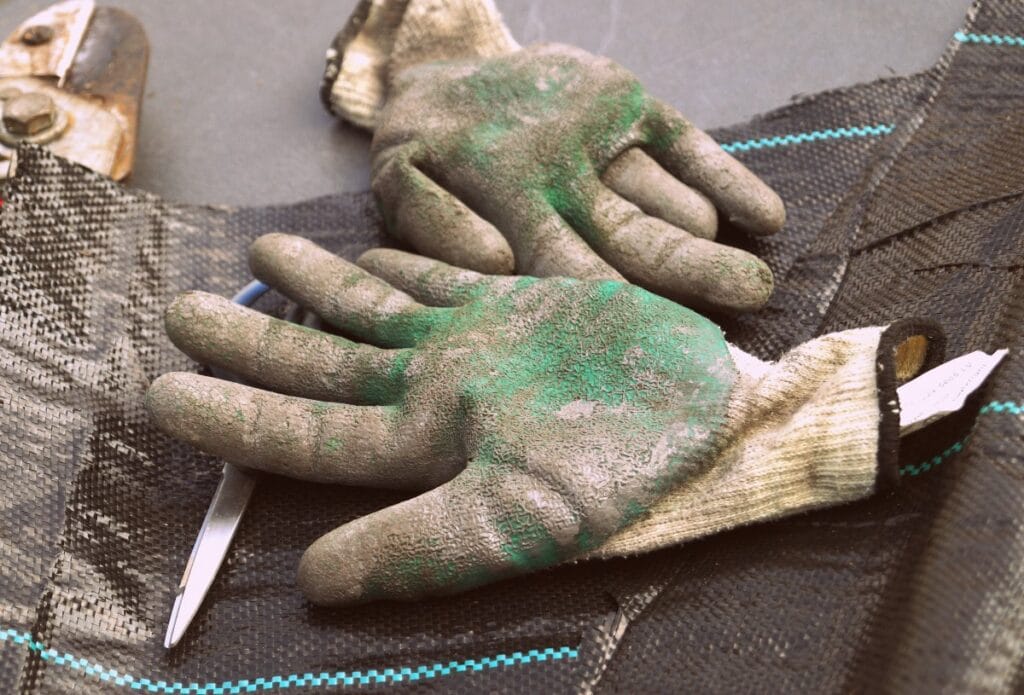
If you’ve ever negotiated with a Chinese supplier, you know it’s a delicate dance — part business, part psychology.
You want better prices, they want higher volumes. You want strict quality, they want fewer revisions.
Done right, both sides win. Done wrong, you lose time, money, and maybe even a shipment.
This guide dives deep into how to negotiate with Chinese workwear manufacturers — not to squeeze them, but to build win-win deals that protect your margins and guarantee consistent quality.
To negotiate effectively with Chinese workwear manufacturers, research market prices, separate product and packaging costs, request multiple quotes, and build long-term trust. Avoid starting with aggressive price demands — instead, show understanding of materials, certifications, and production timelines to earn respect and leverage.
Why Negotiation Is an Art — Not a Battle
In Chinese business culture, negotiation is about relationship-building, not confrontation.
Suppliers respect buyers who are knowledgeable, consistent, and fair — not the ones who chase the cheapest quote.
Remember:
- The goal is mutual sustainability, not one-time victory.
- The best deal isn’t always the lowest price — it’s the best cost-to-value ratio over time.
Poor negotiation often leads to:
- Hidden compromises (weaker fabric, downgraded zippers)
- Production shortcuts
- Quality drop after first order
Real-World Buyer Stories
Case #1 – “The Low Price Trap” (Tanzania)
A Tanzanian distributor negotiated aggressively for a $0.60 reflective vest when market price was $0.85.
The supplier agreed — but quietly switched to lower-grade reflective tape and thinner polyester.
Result: The shipment failed EN ISO 20471 inspection. His end client cancelled the contract.
Lesson: Price pressure without technical control = expensive mistake. Always tie price discussions to exact specs.
Case #2 – “Split Orders, Split Risk” (Brazil)
A Brazilian importer wanted to test two factories at once. He split his 10,000-piece order into two 5,000-piece lots.
After comparing lead time, finishing quality, and communication, he signed a 12-month contract with the better supplier.
Now, that supplier gives him priority pricing and helps him win new tenders in oil & gas projects.
Strategy: Let competition improve quality, not destroy trust.
Case #3 – “The Relationship Dividend” (Egypt)
An Egyptian safety gear distributor has worked with one Chinese factory for six years. He doesn’t negotiate price every order.
Instead, he shares yearly forecasts, pays deposits on time, and sends field feedback.
The factory, in return, absorbs shipping cost fluctuations and offers exclusive models for the Egyptian market.
Lesson: Trust creates leverage. Factories prioritize loyal partners over bargain hunters.
Case #4 – “The Payment Game” (South Africa)
A South African importer learned the hard way: never send 100% T/T upfront.
After the first order arrived late and subpar, he changed to 30/70 terms with inspection photos before balance.
Now he gets on-time delivery — and respect.
Good suppliers don’t mind accountability; bad ones disappear.
Understanding How Chinese Factories Think
| Supplier Concern | What They Fear | How to Reassure Them |
|---|---|---|
| Order cancellation | Losing production slot | Pay small deposit to lock order |
| Delayed payment | Cash flow issues | Share your payment timeline clearly |
| Constant price cutting | Unsustainable margin | Explain that stable orders = better pricing |
| Unrealistic deadlines | Factory overload | Give accurate project schedule |
| Long silence | Losing client interest | Maintain regular updates, even short ones |
A factory that trusts you will go the extra mile — better QC, faster delivery, more flexibility.
Negotiation is about reducing fear, not just reducing price.
The 5-Step Negotiation Framework
Step 1: Know Your Numbers
Before you talk price, know the baseline:
- Average market price for your target product
- Material cost range (fabric, zippers, reflective tape)
- Shipping rates, customs fees, and duties
Example: If a high-visibility vest costs $0.80–$0.90 on average, a quote under $0.70 likely means compromise, while above $1.10 means extra features or low MOQ.
Pro Tip:
Use Alibaba, 1688.com, and trade fair catalogues to benchmark.
Knowledge = leverage.
Step 2: Separate the Components
Negotiate by breaking the quote into parts:
| Cost Element | What to Ask | Negotiation Tip |
|---|---|---|
| Fabric | What fabric weight / blend is used? | Compare options: 65/35 vs 100% cotton |
| Reflective tape | Which brand and width? | Ask for photos or brand certificate |
| Zippers & trims | Local or YKK-type? | Request sample close-ups |
| Logo printing | How many colors? | Bundle into total cost |
| Packaging | Polybag, carton size, logo print? | Request cost breakdown |
When suppliers see that you understand their cost structure, they’ll quote you more honestly — and respect you more.
Step 3: Control the Timing of Discounts
Timing matters more than tone.
-
Don’t ask for lowest price at first quote.
Instead, say:“I’m comparing options for long-term cooperation. Can you give me your best stable price for 12 months?”
-
Negotiate after sampling, not before.
Once the supplier invests effort in developing your sample, they’re more open to price discussions. -
Use volume leverage smartly.
“If this order goes well, I’ll repeat every quarter.”
But only say it if you mean it — factories remember empty promises.
Step 4: Balance Price with Quality Assurance
A good negotiation ends with clarity, not just numbers.
Ask for:
- Pre-production samples (PPS)
- Bulk sample before mass sewing
- QC photos before balance payment
- Penalty clause for late delivery (if relationship allows)
The goal: protect your downside, not punish the factory.
| Negotiation Item | Buyer Objective | Supplier Win |
|---|---|---|
| Stable price for 3 months | Predictable costing | Guaranteed orders |
| QC photos before shipment | Quality assurance | Faster approval |
| Shared shipping cost | Lower landed cost | Repeat client |
| Payment in 2 phases | Reduced risk | Cash flow continuity |
Step 5: Keep Records and Commitments
Use written summaries after every call or chat:
“As discussed, 3,000 reflective vests, EN20471 certified, FOB Ningbo, $0.85/pc, delivery by Dec 10.”
Chinese suppliers appreciate clear documentation — it reduces misunderstanding and protects both sides.
Always confirm:
- Quantity and specifications
- Packaging method
- Lead time and payment terms
- Logo / label artwork approval
And of course, store all PI, samples, and chat logs.
They’re your insurance if disputes arise later.
Practical Script: Sample Negotiation Dialogue
Buyer: We’re considering your factory for a 5,000-piece test order. Can you confirm the reflective tape brand?
Supplier: It’s a local brand, 5cm width.
Buyer: Could you quote both this and a 3M option? I want to evaluate long-term consistency.
Supplier: Sure, 3M will add $0.12 per piece.
Buyer: That’s acceptable for export to Europe. If we confirm repeat orders, we’ll fix the 3M option as our standard.
👉 The tone is firm but respectful. You’re showing technical understanding, not just price chasing.
Case Study: Brazil Agent’s Smart Payment Strategy
A Brazilian agent used to prepay 50% deposits, but suppliers kept delaying.
He changed his model:
- 30% deposit
- 40% after inspection photos
- 30% after Bill of Lading copy
He also offered to pay earlier for faster turnaround on urgent projects.
Result: The factory prioritized his orders and froze his unit price for 18 months — despite raw material cost increases.
Tools: Negotiation Preparation Checklist
| Category | Key Questions | Why It Matters |
|---|---|---|
| Product Specs | What standards must be met? | Determines base cost |
| Sample Approval | Have you tested the prototype? | Avoids surprises |
| Lead Time | Confirm production + shipping window | Plan sales schedule |
| Payment Terms | Can you split payments by stage? | Manage risk |
| Communication | Is the supplier responsive? | Predicts reliability |
| Long-Term Potential | Is the factory flexible for growth? | Builds trust |
Quick Reference: Price vs Quality Balance
| Buyer Type | Approach | Result |
|---|---|---|
| Price Hunter | Chases lowest quotes | Quality risks, inconsistent supply |
| Relationship Builder | Balances price & stability | Long-term growth, loyalty |
| Technical Buyer | Focuses on standards & samples | Reliable compliance, brand reputation |
Red Flags During Negotiation
- Supplier avoids discussing fabric composition or standards
- Pushes for 100% payment before production
- Changes quotation after you send PO
- Uses vague language like “similar to 3M” or “same quality as big brands”
- Offers multiple unrelated products (PPE + furniture + toys)
When you see these, slow down — not every “factory” deserves your deposit.
Summary: The Golden Rules of Negotiation
✅ Do your homework — know prices and standards.
✅ Focus on total value, not just unit cost.
✅ Be transparent about your goals and timelines.
✅ Reward good performance with loyalty.
✅ Keep communication consistent — even between orders.
Remember:
“In China, trust is currency. Once you earn it, your price will take care of itself.”
📩 Need help preparing a negotiation script or supplier shortlist?
Email: [email protected]
🌐 Visit www.workwearsolutions.net
Zion Zhang
Recent Posts
 Quality Control & Pre-Shipment Inspection: Avoiding Expensive Surprises2025年10月7日In international workwear trade, one of the most painful […]
Quality Control & Pre-Shipment Inspection: Avoiding Expensive Surprises2025年10月7日In international workwear trade, one of the most painful […] Sampling Strategy: How to Use Small Orders to Test the Market2025年10月7日Before going all-in on a new supplier or product, smart […]
Sampling Strategy: How to Use Small Orders to Test the Market2025年10月7日Before going all-in on a new supplier or product, smart […] How to Identify Reliable Workwear Suppliers in China2025年10月7日If you’ve ever tried sourcing workwear from China, you know […]
How to Identify Reliable Workwear Suppliers in China2025年10月7日If you’ve ever tried sourcing workwear from China, you know […] Food Processing Industry Workwear: Hygiene and Cold Room Protection2025年9月29日Step into a meat plant in Brazil, a dairy facility in […]
Food Processing Industry Workwear: Hygiene and Cold Room Protection2025年9月29日Step into a meat plant in Brazil, a dairy facility in […] Utilities & Energy Workwear: Arc Flash and Chemical Protection2025年9月29日From power plants in Morocco’s desert winds, to hydropower […]
Utilities & Energy Workwear: Arc Flash and Chemical Protection2025年9月29日From power plants in Morocco’s desert winds, to hydropower […] Healthcare & Pharma Workwear: Hygiene, Antimicrobial, and Compliance2025年9月29日Step into a pharmaceutical plant in Cairo or a hospital […]
Healthcare & Pharma Workwear: Hygiene, Antimicrobial, and Compliance2025年9月29日Step into a pharmaceutical plant in Cairo or a hospital […]
CONTACT US
- Feel free to contact us any time. We will get back to you as soon as we can!
- +86-17303331701
